
TikTok and Instagram Reels have redefined what a “good ad” looks like.
Native-feeling content helps disguise your ad as a regular post, and more and more of our partners are seeing success mixing native social media elements into their ads. Even on Meta.
We’ve run thousands of ad tests across Facebook, Instagram, TikTok, and other channels, and we’ve found that ads that mix native social elements into the creative consistently outperform brand-driven creative.
But how do you drive conversion while staying native to the platform? Can funny voiceovers really sell products? Yes!
Here are 9 winning video ad templates that consistently win across multiple channels (not just TikTok).
Elements of a Winning Video
Before we dive into specific templates you can use and scale for your own videos, let’s talk about the do’s and don’ts of social media video ads.
There are a few key things that we’ve seen work no matter which video ad templates you pick:
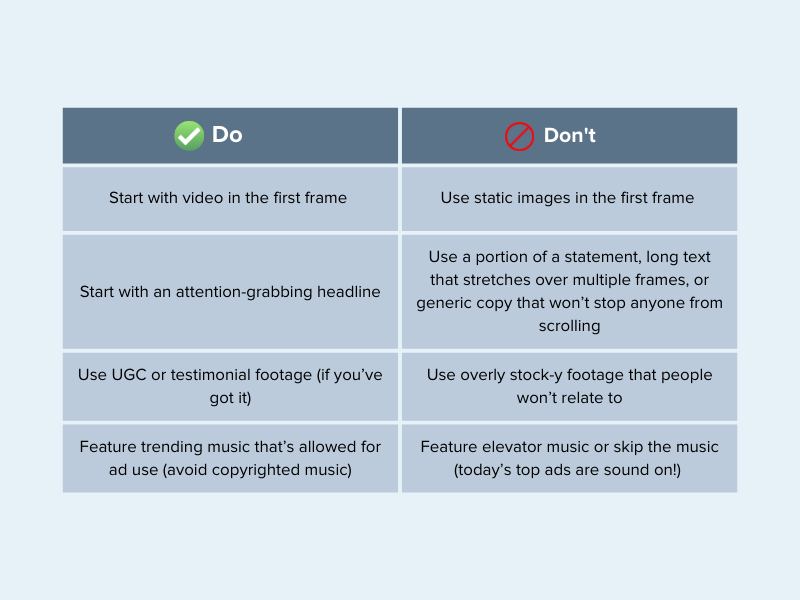
Video Ad Templates:
Now that you know the do’s and don’ts of creating winning video ads, it’s time to start creating your video ad. Here are 9 frame-by-frame video ad templates you can easily copy for your social ads!
1) User-Generated Content (UGC)
What it does: Showcases how consumers have benefited from using this brand. Imitates the “native” feeling of organic platform posts. Draws on the best parts of TikTok-style ads.
The Formula — How to structure your video:
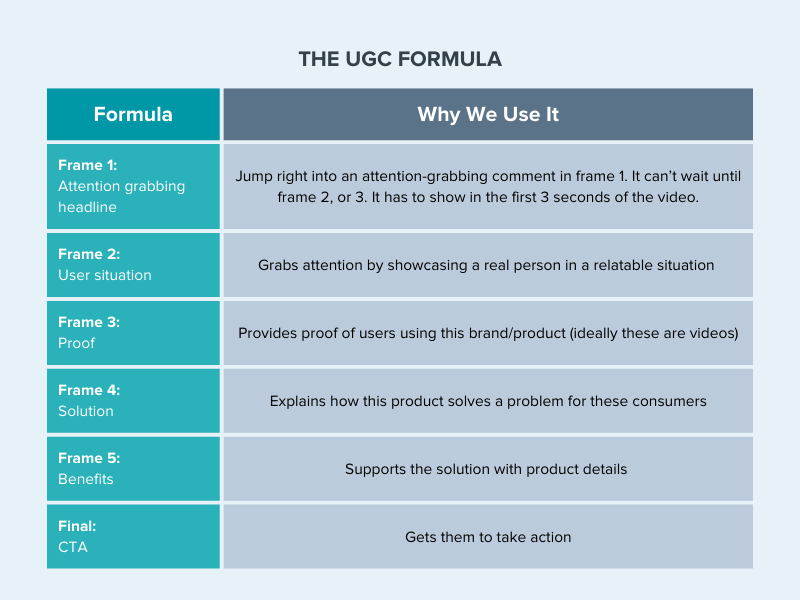
Example:
https://goprimer-1.wistia.com/medias/indqm2q9cd?embedType=async&videoWidth=400
How the example uses the formula:

2) Vs. the Alternative
What it does:
Positions the brand as the superior choice to the alternative options. Compares your brand to your competitor’s or your product to an alternative solution.
Tip: Be specific about what makes your product great. Directly contrast it with the alternative. Some examples of what to highlight:
- Lower price
- Easier to use
- Higher quality
- Healthier or more environmentally friendly
The Formula — How to structure your video:

Example:
https://goprimer-1.wistia.com/medias/xj7rhbybd0?embedType=async&videoWidth=400
How the example uses the formula:
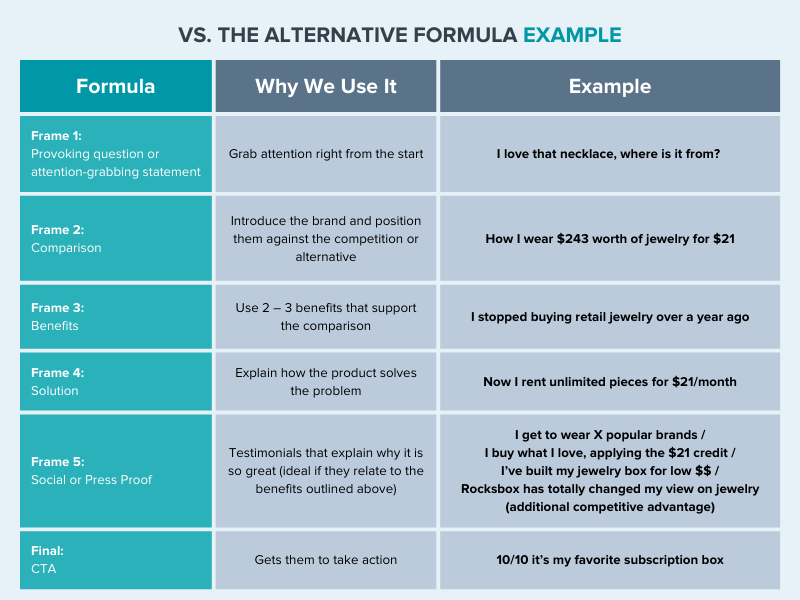
3) “Made Easy”
What it does: Positions your product as the EASIEST possible solution to a customer’s problem. Shows that looking/feeling/performing better doesn’t have to be difficult. Other people just like you are already benefiting from trying something new.
Tip: Highlight how the process works in short, simple steps. Reinforce the simplicity with testimonials focused on ease of use.
The Formula — How to structure your video:
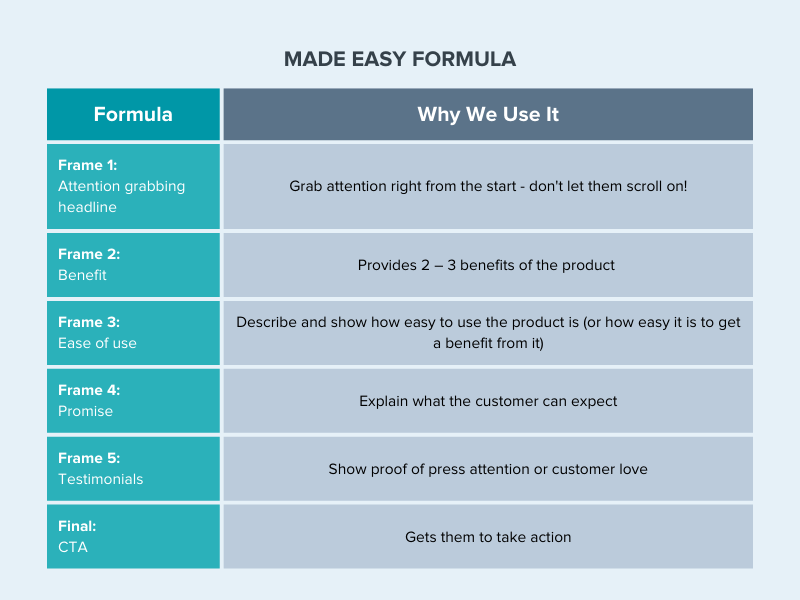
Example:
https://goprimer-1.wistia.com/medias/5pssjxmi4i?embedType=async&videoWidth=400
How the example uses the formula:
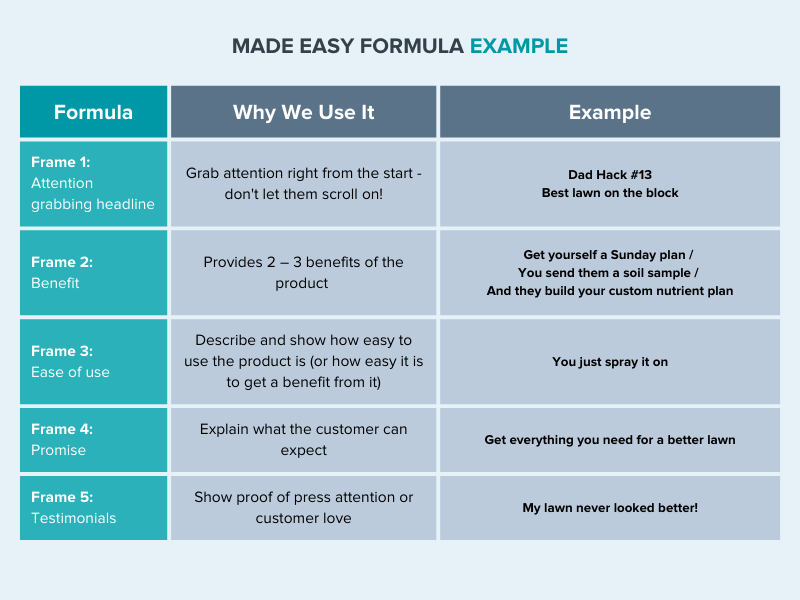
4) Buyer Decision Questions (BDQ)
What it does: Answers the most important Buyer Decision Questions (BDQs) that potential customers would ask themselves during the purchasing process.
Tip: Be clear and concise; use UGC/social proof to demonstrate the core benefits of the product or service. Can also format as “3 or 5 reasons why X”.
The Formula — How to structure your video:
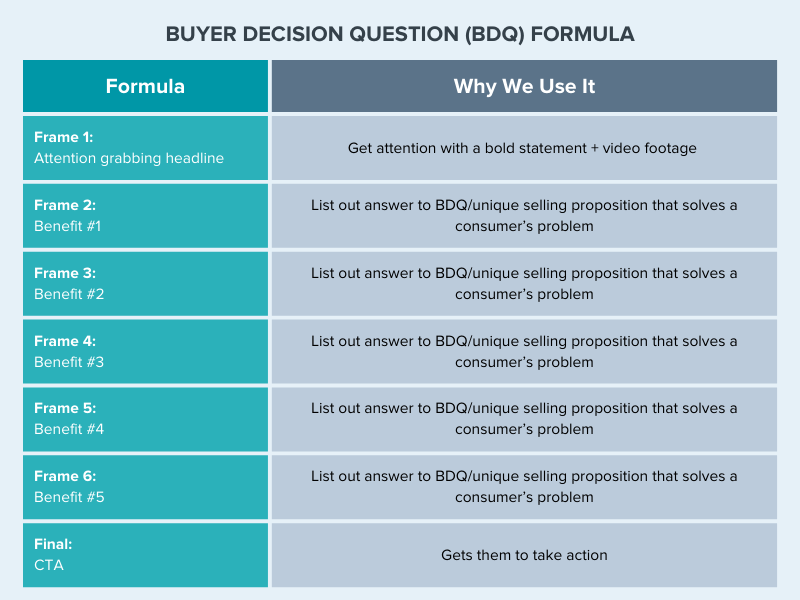
Example:
https://goprimer-1.wistia.com/medias/7jbaxakoxd?embedType=async&videoWidth=400
How the example uses the formula:
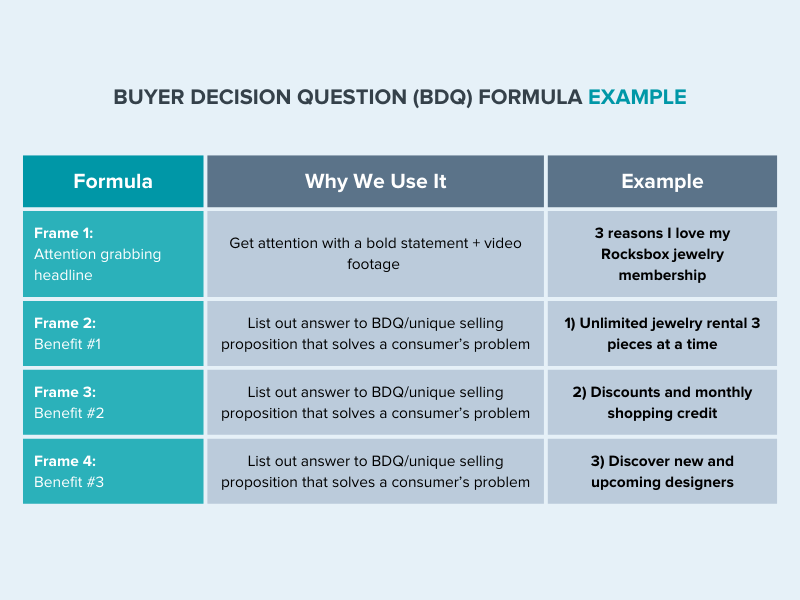
The video answers some core BDQs, particularly:
- How many pieces do I rent at a time?
- Are there any discounts if I want to buy the pieces I try?
- What’s the benefit of renting vs. buying?
5) Press + Testimonials
What it does: Uses press quotes and customer testimonials in creative to tell the story of how and why the product works. It provides social proof and validation that the product works and that customers love it.
Tip: An easy way to implement it is by showing UGC with a voiceover of a customer giving an honest product review. You can also use UGC footage with shortened testimonials/benefits laid over in text.
The Formula — How to structure your video:

Example:
https://goprimer-1.wistia.com/medias/cofx9va9d9?embedType=async&videoWidth=400
How the example uses the formula:

6) How To
What it does: Explains to customers how to solve a key problem and presents your product as the solution. This can be humorous or more didactic.
The Formula — How to structure your video:
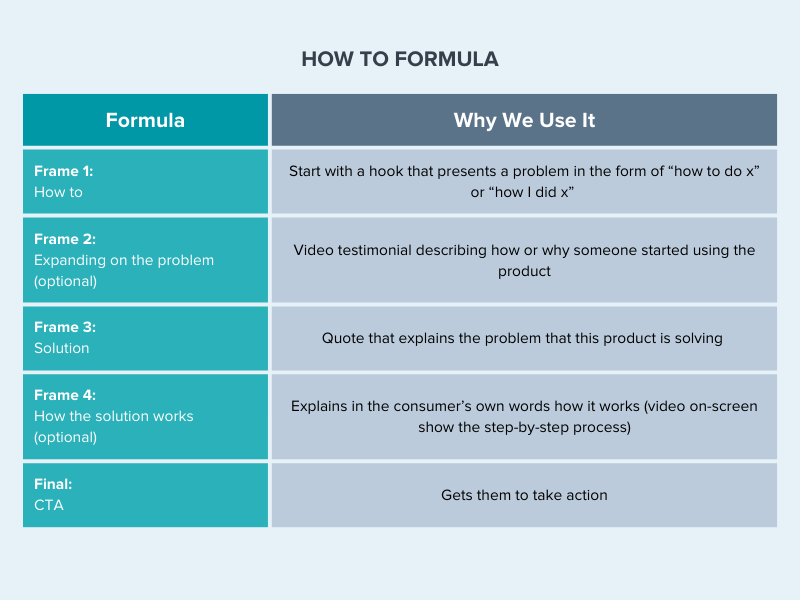
Example:
https://goprimer-1.wistia.com/medias/kqs1qg4k2r?embedType=async&videoWidth=400
How the example uses the formula:
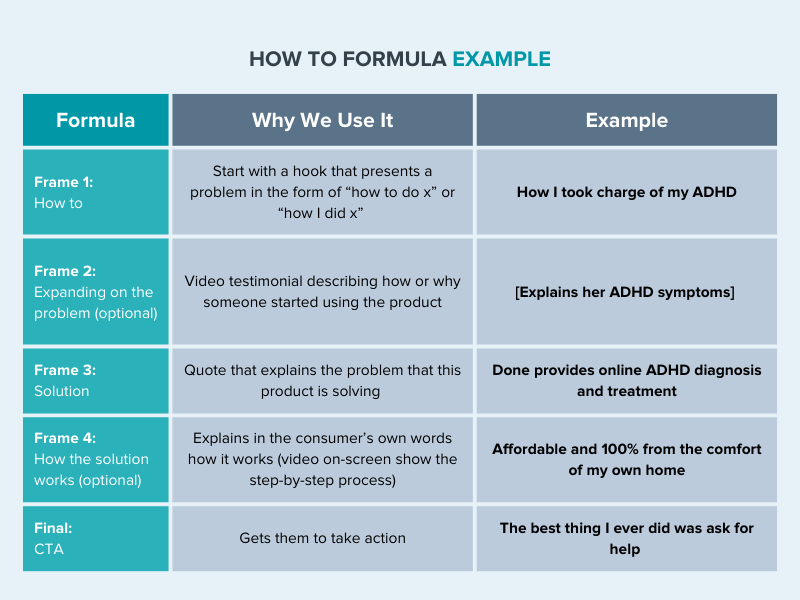
7) Montage
What it does: Relies heavily on product shots and product UGC to sell the product. This type of shot is inspired by TikTok and Instagram Reel trends of syncing images/video to music.
Tip: This is best for brands with a wide range of product offerings or color options for one core product. Since it’s focused on the aesthetics of the product or quick shots of the product in action, it’s less beneficial for brands that need an extensive explanation of what their product is and how it works.
The Formula — How to structure your video:

Example:
https://goprimer-1.wistia.com/medias/rzqofi198e?embedType=async&videoWidth=400
How the example uses the formula:
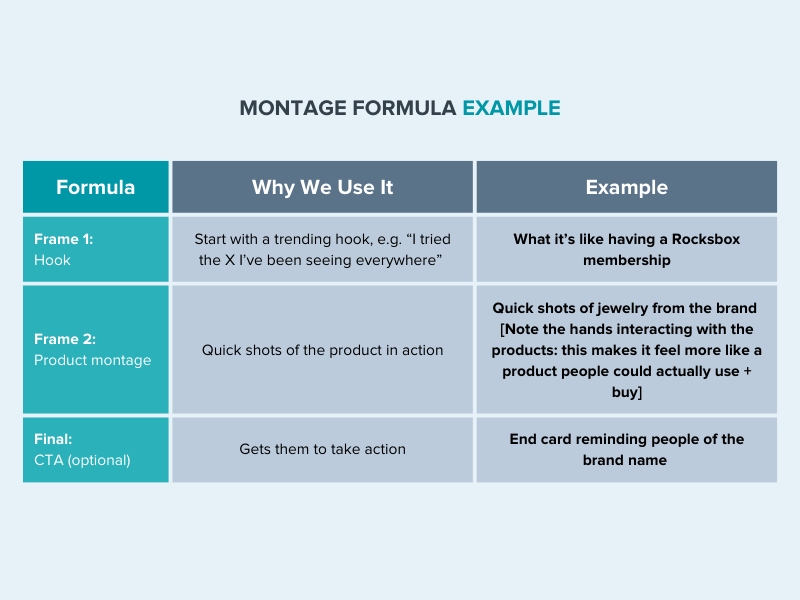
8) Sales Q
What it does:
Uses an FAQ-style to address sales questions head-on, with answers that help guide a user past their purchase objections.
Tip: Lay out questions in a conversational way, how potential customers would actually ask them. Answer in a genuine, natural way.
The Formula — How to structure your video:
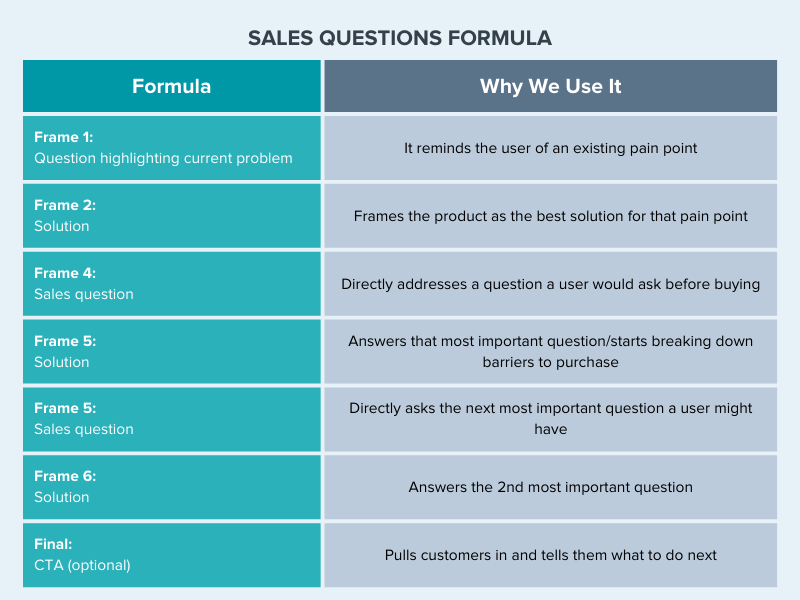
Example:
https://goprimer-1.wistia.com/medias/8b10n1l3bz?embedType=async&videoWidth=400
How the example uses the formula:
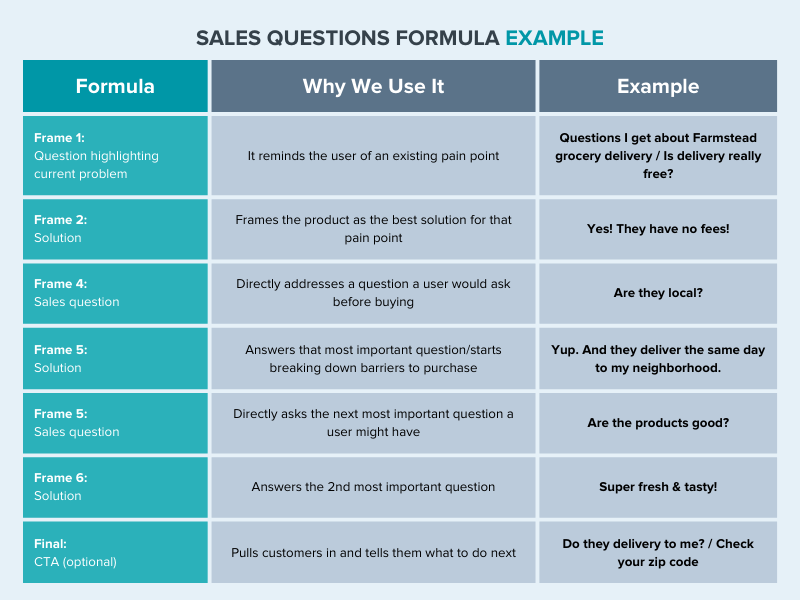
9) Native Style
What it is: Imitates organic posts. These styles of ads generally get more engagement and shares.
The Formula — How to structure your video:
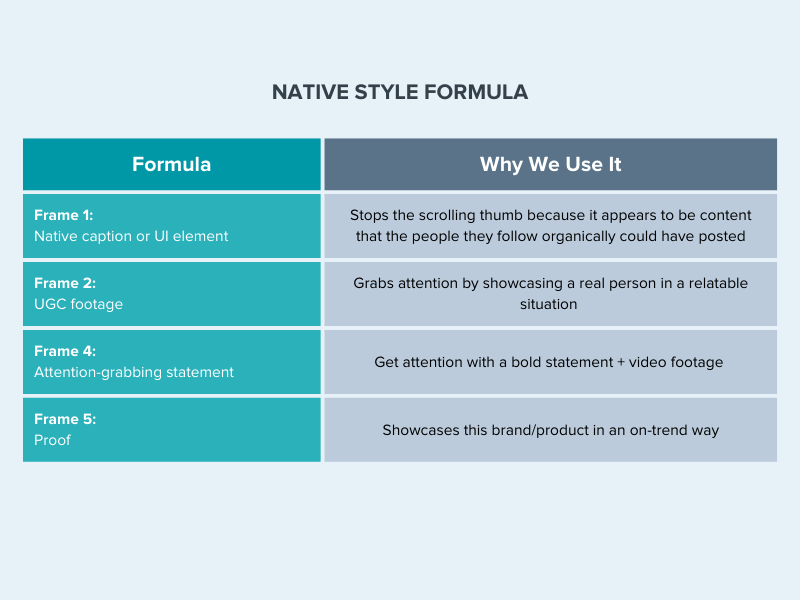
Best Native Content elements to include:
- Instagram/TikTok-style captions
- TikTok filters (e.g. green screen)
- Ask boxes
- Stickers
- Polls
- UI elements (e.g. stylizing like a text message)
- Channel-specific trends
Example:
https://goprimer-1.wistia.com/medias/rp1o9holyn?embedType=async&videoWidth=400
How the example uses the formula:
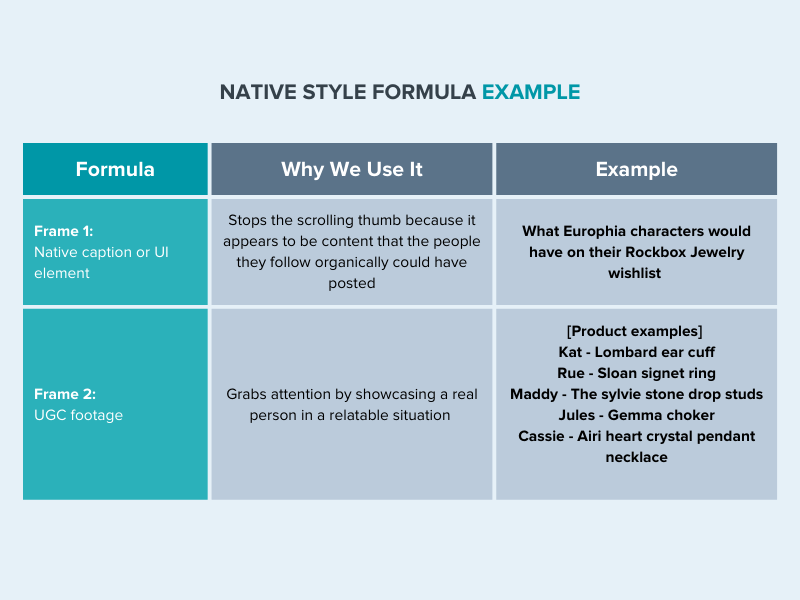
—-
It’s Your Turn to Use these Ad Templates that Convert
There you have it: 9 detailed video ad templates for your next social media video ad.
As the advertising landscape keeps changing, it’s important to test new styles in addition to your tried-and-true creative. We’ve included UGC in almost every example because that’s what we’ve seen working across the board. You might easily swap the UGC for a founder’s story or more polished product videos from your team.
If you have any questions about the new style of social media ads (and why they work!), we’re here to help.
Book a free consultation to learn how creative testing can help you hit your growth goals. And stay tuned for exciting updates on new Primer offerings!



